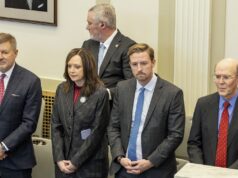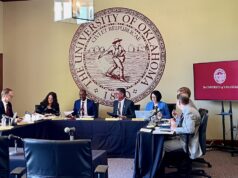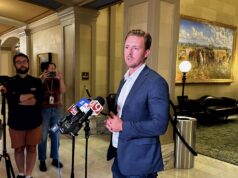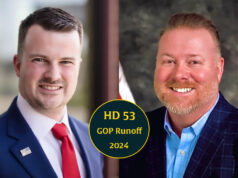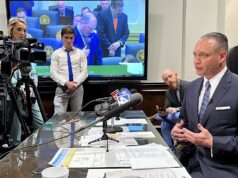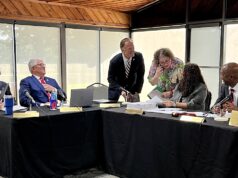For the second time this week, University of Oklahoma President Joe Harroz faced a pack of prying journalists Thursday and answered a slew of questions about when, why and under what criteria his athletic director will hire a new head football coach. Harroz attempted to reassure a core constituency — football fans, season ticket holders and program donors — that the unexpected departure of Lincoln Riley for the University of Southern California was but a bump in the road.
If the state’s flagship university were a highway, Harroz and the OU Board of Regents have spent the last three years engaged in emergency bridge repairs, offramp relocations and utter overhauls for miles of asphalt. Metaphors aside, OU has reconfigured its health sciences center, its research efforts, its fundraising operation and its overall financial plan in the last three years. Not to be forgotten, the university’s net financial position and its internal fiscal controls are in significantly better shape than they were five years ago.
“There was so much groundwork that had to be done. It’s like renovating a house,” Harroz said following Thursday’s marathon meeting of the OU Board of Regents. “All the behind-the-wall stuff isn’t really attractive and you never see it, but you’ve got to get it done.”
With so much other change already under his belt during his 30 months as OU president, perhaps Harroz finds the task of replacing Riley less daunting than the average alumnus.
“We have to move quickly, we know that. We’re moving aggressively. We’ve got a seasoned and talented team. We’re going to have a new head coach, and this is going to be a road bump. It’s a road bump, that’s what it is,” Harroz told reporters. “In some ways, and you’ve seen the media that is out there, we have donors that are even more invigorated right now and more committed. So, if we do this right, which I’m confident we will (…) in many ways (…) I think we will come out stronger.”
Regent: ‘The coach was ready to leave’
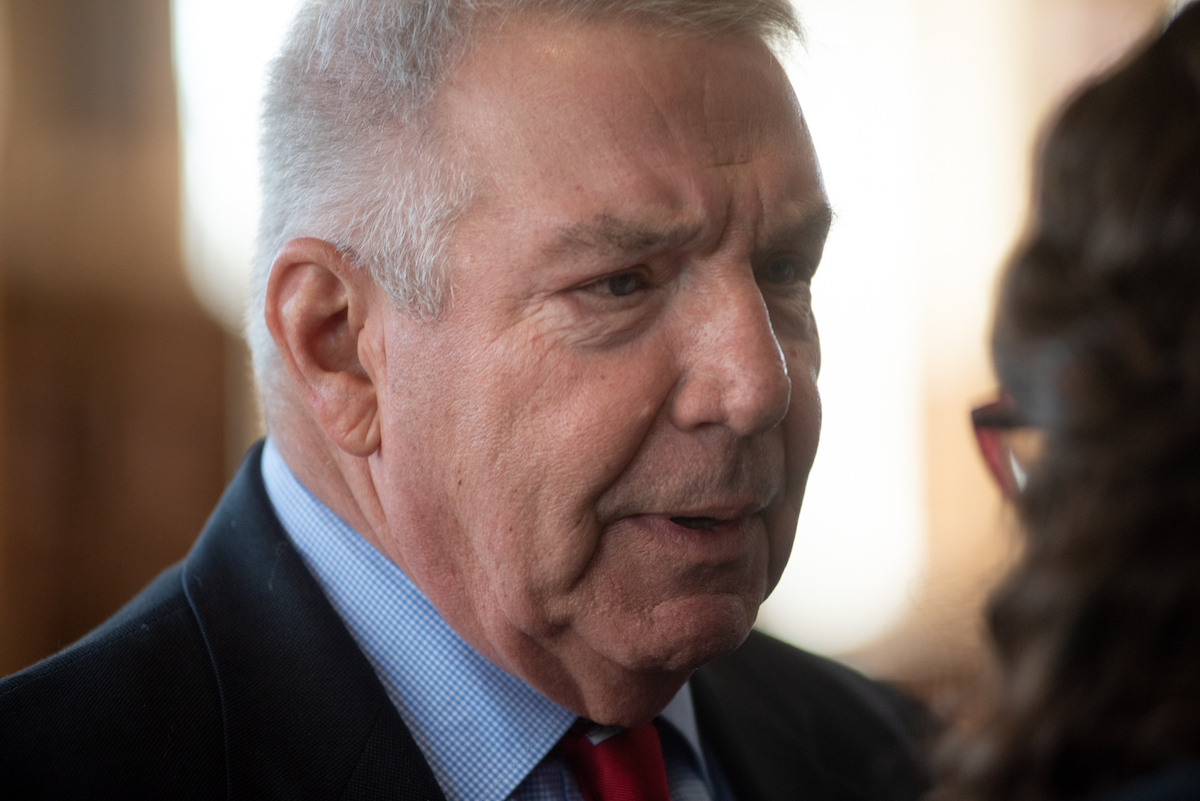
The public focus on OU’s football coaching situation was not lost on Board of Regents Chairman Michael Cawley, who made the board’s edgiest joke Thursday when Rogers State University President Larry Rice sat down wearing a red tie and quipped that he had been told “never to wear an orange tie.”
Cawley responded: “You probably shouldn’t wear a USC tie, either.”
Thursday’s meeting started with nearly five hours of executive session for the regents. Following an hour’s worth of a public meeting to approve more than three dozen agenda items related to OU, Rogers State and Cameron University, the regents went back into executive session for about 45 minutes to discuss purpose “F” of its executive session agenda: “Routine, periodic review of employment of University president(s).” (During the public portion of Thursday’s meeting, the board had already approved a pair of employment agreements running through June 30, 2026, for Cameron President John McArthur and Rice, the Rogers State president.)
After Thursday’s public portion of the meeting, Cawley confirmed that the day’s extensive executive sessions had little to do with OU’s football coaching plans.
“We actually did visit with [Athletic Director Joe Castiglione] briefly today, but this is a point in time when he is still working this and really doesn’t have a lot to say,” Cawley said. “What I tell people, with respect to the football team, is we’ve been through this before. Bud Wilkinson retired, Barry Switzer retired. We’ll find someone else, and there are plenty of people interested in it, and we will work as hard as we can to find the best person for the job.”
NonDoc obtained a copy of an email Cawley sent this week about Riley. Cawley wrote that the vaunted offensive guru had been involved in and supportive of OU’s decision earlier this year to leave the Big 12 Conference for the Southeastern Conference.
In the email, Cawley wrote that he understood Riley to be “fully apprised” and “fully supportive” of the SEC move.
Thursday, Cawley told NonDoc that was still his understanding. He also said “it wasn’t a money issue.”
“My understanding is the coach was ready to leave,” Cawley said.
Harroz high on research, health care developments
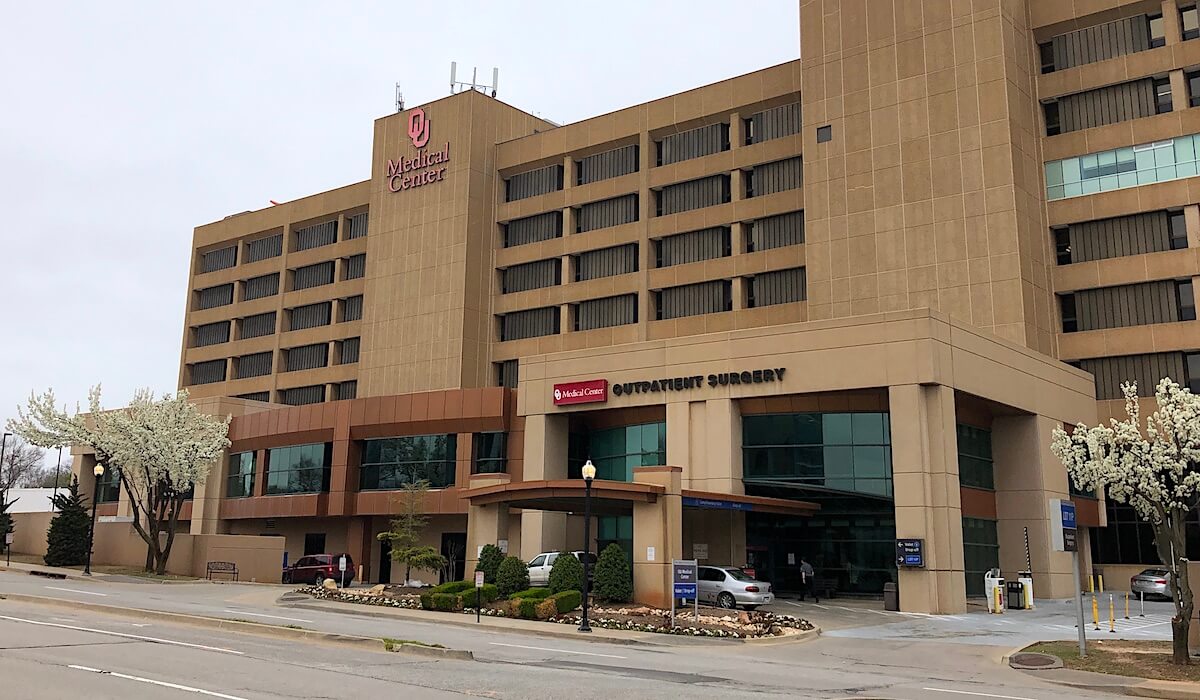
Exactly when Riley stuck his first foot out the door remains unclear, although it seems likely to be a key topic for media, message boards and — perhaps — NCAA compliance investigators for months to come. One rarely accomplishes major moves without significant planning and consideration.
That pertains to university governance and leadership as well, and the OU Board of Regents, Harroz and his senior leadership team have done a great deal of planning and consideration over the past 30 months. Harroz said that process started with establishing OU’s new strategic plan, which itself faced initial obstacles owing to COVID-19’s disruptions.
“We got a strategic plan. We achieved the hospital merger. The biggest thing I will ever be a part of in my time at OU will be that hospital merger with the physician practice group and what it can do for health care in this state,” Harroz told NonDoc. “I’m so honored to be a part of it. To most people, it’s a difficult thing to describe, but that’s a headline.”
Harroz referenced Tomás Díaz de la Rubia, who joined OU as vice president of research and partnerships in October 2019 and who spoke to regents Thursday about significant increases in the research funding obtained by university departments this year.
“We talked about the research enterprise and where that’s going,” Harroz said. “That increase is material, and the trajectory of where it’s heading (is exciting). And stay tuned, there’s more to come on the research side.”
Harroz also referenced the regents’ March decision to fold the university’s development and advancement department under the OU Foundation, which Harroz said brought OU’s fundraising operation in line with national trends and has already paid (literal) dividends.
“Getting fundraising on the right path so we can make [education] affordable and accessible is a huge part of this,” Harroz said. “So when we look at what have we done in the last year, I think the answer is we have begun to earn those things that are under the strategic plan that we have dreamed of.”
Thursday’s meeting agenda underscored the fruits of those labors and offered evidence that the major shifts on health care, research and fundraising are ongoing.
Regents approved Items 30 and 31 on Thursday’s agenda to finalize issues regarding the transition of OU’s teaching hospital physicians to be included under the reconfigured umbrella of OU Health, a nonprofit affiliate of the university that Harroz describes as a fully integrated academic health center that has the potential to dramatically improve citizens’ access to critical types of care.
The items approved by regents Thursday involved adjustments to the paid time off and retirement benefits for members of the OU Physicians practice group that are now dually employed by OU and OU Health. (Previously, they were only employees of OU.)
“This is the final step of faculty coming over,” Harroz said.
Regents also approved Item 8 as a modification to the Doctor of Medicine program in the School of Community Medicine. The new effort will fast-track six student slots through a three-year medical school program, dropping from seven to six the number of years it will take those students to reach the open market as physicians.
Thursday’s agenda noted that “research” awards for OU are up 7.2 percent (or $8.4 million) for the July through September period, with highlighted grants covering a variety of topics, such as cancer, diabetes, water conservation in the Red River basin, the biological science of aging, the impact of artificial lights on sleep and health, and defense issues.
Item 16 of Thursday’s agenda offered an example. Regents approved the $1.3 million purchase of “a concept laser Series 5 metal additive manufacturing system,” which “can automatically 3D print metal parts” from computer-aided design models.
“Parts are built layer by layer by melting fine metal powders using a focused laser beam, thereby allowing complex geometrics with high dimensional accuracy to be achieved,” according to the regents’ agenda. “The GE Concept Laser metal AM system will be used to establish the urgently needed research capabilities for the manufacturing of a wide range of metal parts including titanium alloys, aluminum alloys, stainless steels, etc.”
Funding for the project has been provided through a research contract with the U.S. Air Force and the Oklahoma City Air Logistics Complex, the agenda stated.
Fundraising fun
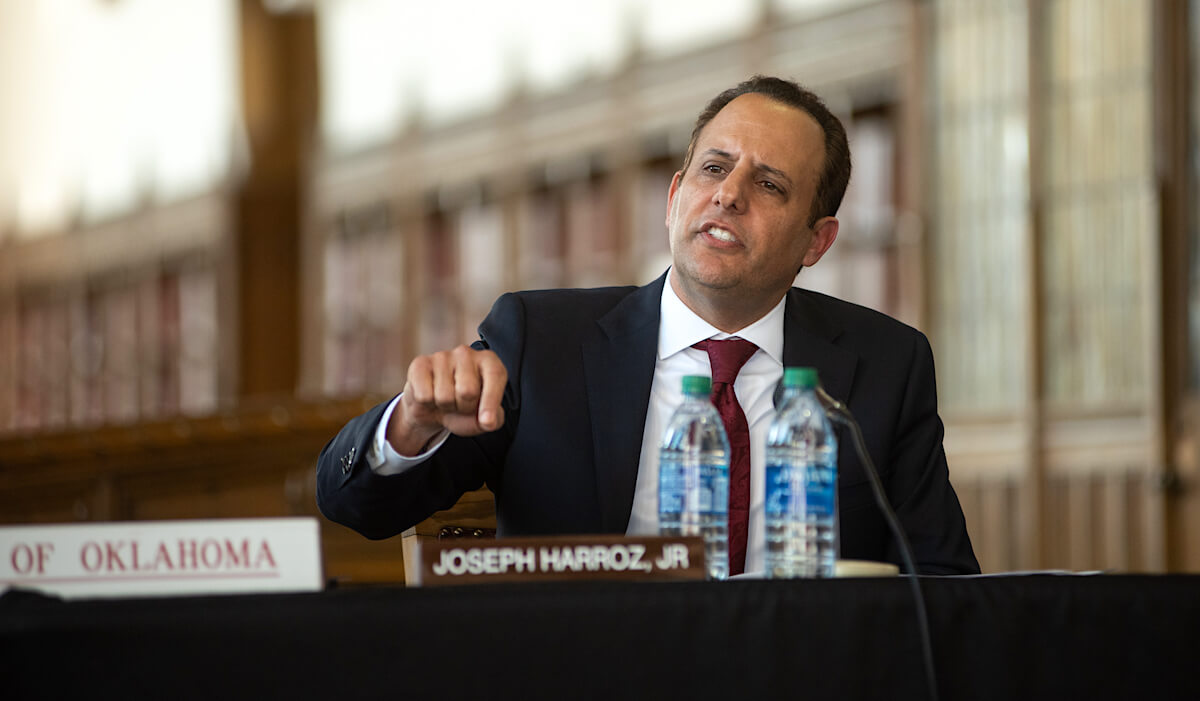
Regents also approved the development of a new 30,000 to 35,000-square-foot Native Nations Center on the Norman campus. The effort is expected to cost between $13.5 million and $15.75 million, with much of the money coming from a donor who Harroz said prefers to remain anonymous.
“The Native Nations Center at OU will strive to be the premiere center for research and scholarship on native cultures and sovereignty, providing opportunities that will foster and further cultivate relationships between the University of Oklahoma and the native nations within our state and those outside our state,” Thursday’s agenda stated.
The agenda also featured a list of six other gifts or pledges of $1 million or more to the OU Foundation:
- $5 million from the Chickasaw Nation to support diabetes research and to establish the Chickasaw Nation chair in adult endocrinology;
- $2 million from the J.E. and L.E. Mabee Foundation, Inc., to support OU Law students;
- $2 million from Gregg Wadley and Betsy Brackett to the Athletic Department to support OU football, gymnastics, tennis and athletic capital projects;
- $1.997 million from Alton and Gladys Patterson as a planned gift through their family trust. The pledge will support the OU Gallogly College of Engineering;
- $1.874 million from Harold Hamm through his Harold Hamm Foundation to support the Harold Hamm Diabetes Center’s multidisciplinary research teams;
- $1.5 million from the Arnall Family Foundation to support a five-year project bringing the Parent and Child Assistance Program to Oklahoma. The effort will be a collaboration with the University of Washington and the Oklahoma State Department of Health to support pregnant and parenting women who are involved in or are at risk of involvement in the child welfare and juvenile justice systems.
Harroz said the gifts underscore how well OU’s fundraising efforts have been going.
“This past year, we raised $230 million plus $10 million in dedicated, guaranteed future gifts. So just shy of one-quarter billion dollars. We’re off to a record first quarter for this (fiscal) year, so our trajectory looks good,” Harroz said. “We know to be good enough to be with our peers and our aspirational peers, we have to do more than double where we were on a consistent basis and hopefully go north of that.”
Follow @NonDocMedia on:
Board requesting bonds to fund projects
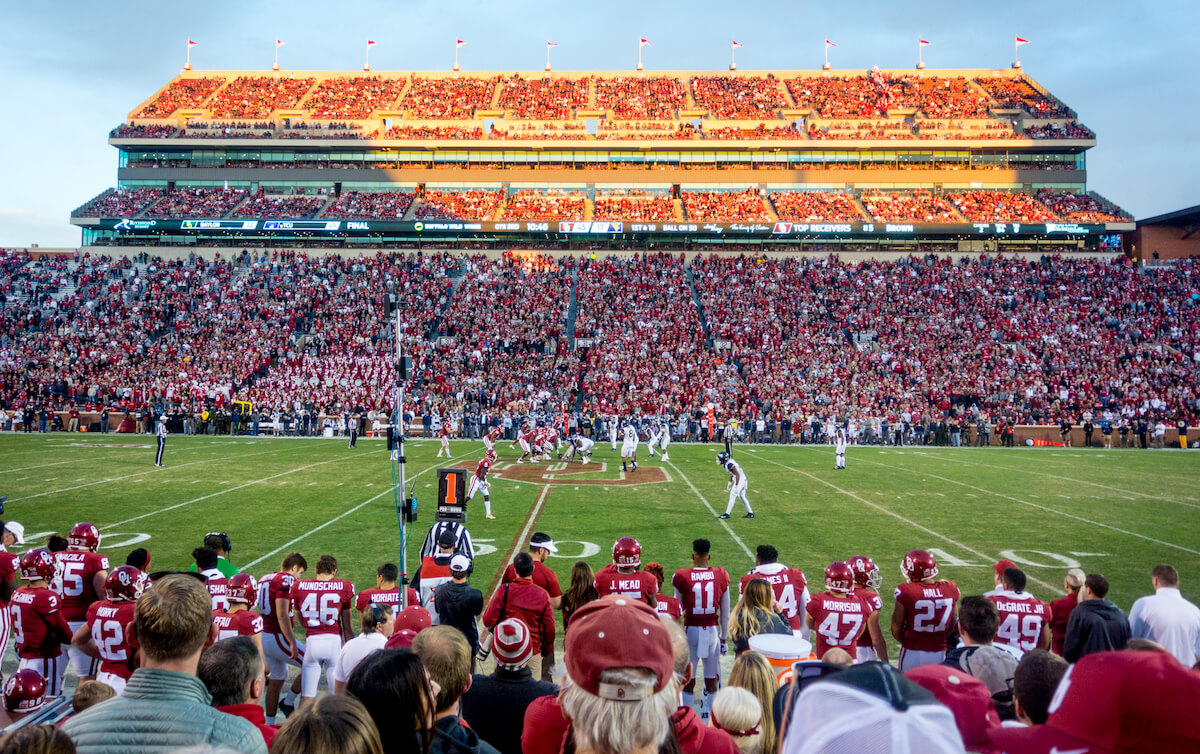
The OU Board of Regents also approved steps forward for a series of bonding efforts aimed at financing physical upgrades to OU campuses.
Regents approved submitting the legally required request to Gov. Kevin Stitt and leaders of the Oklahoma Legislature to issue up to $50 million in general, limited and special obligation bonds for expansion and upgrades of the utility system of the OU Health Sciences Center.
“This is something that is essential,” regent Natalie Shirely said.
Cawley said it had been “needed for a long time.”
The university will also be requesting participation in the state’s master-lease purchase program, which consolidates multiple funding requests into a single debt issuance by the Oklahoma State Regents for Higher Education. OU’s request involves $16.3 million approved Thursday by regents to “replace LED displays in various athletics facilities,” replace the football stadium’s playing field assembly, replace the track stadium’s infield and improve sports lighting at Owen Field and the football program’s practice field.
“There is an enormous amount of things going on here at this university,” Cawley told NonDoc. “There’s a lot of good things going on at the University of Oklahoma, so we’ve got a lot of other things to do.”
Harroz concurred, praising this year’s freshman class as the largest in school history and noting that 25 percent of enrollees are the first in their families to attend college.
“I think there are just really exciting things that are happening that are the result of people galvanizing and rallying around a common plan,” Harroz said.
While the monumental adjustments planned and implemented over the past three years by the OU Board of Regents may not take the edge off of football fans’ frustrations and fears, Harroz said the university’s leaders are unafraid of change.
“There are challenges every day, and you can’t ever declare victory, but I’m really proud of what everyone has done,” Harroz said. “We are starting to see, I think in a very clear way, the benefits that can come from this kind of discipline.”
Lawmaker: ‘OU is headed in the right direction’
House Appropriation and Budget Education Subcommittee Chairman Mark McBride (R-Moore) often exercises his legal authority to sit in on the executive sessions of the OU Board of Regents.
McBride attended about two hours of Friday morning’s executive session. Afterward, he said OU leaders are discussing “super stuff.”
“I think OU is headed in the right direction from what I see when I sit in on these meetings,” McBride said. “There are some things I’d like to change, but overall I feel like the university is headed in the right direction.”











